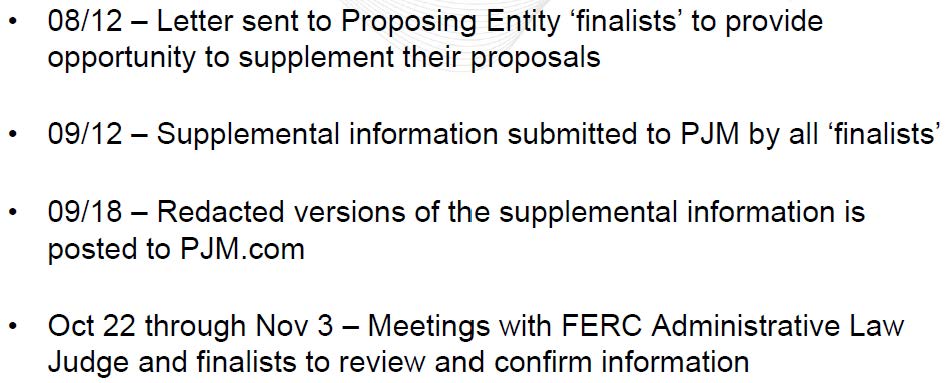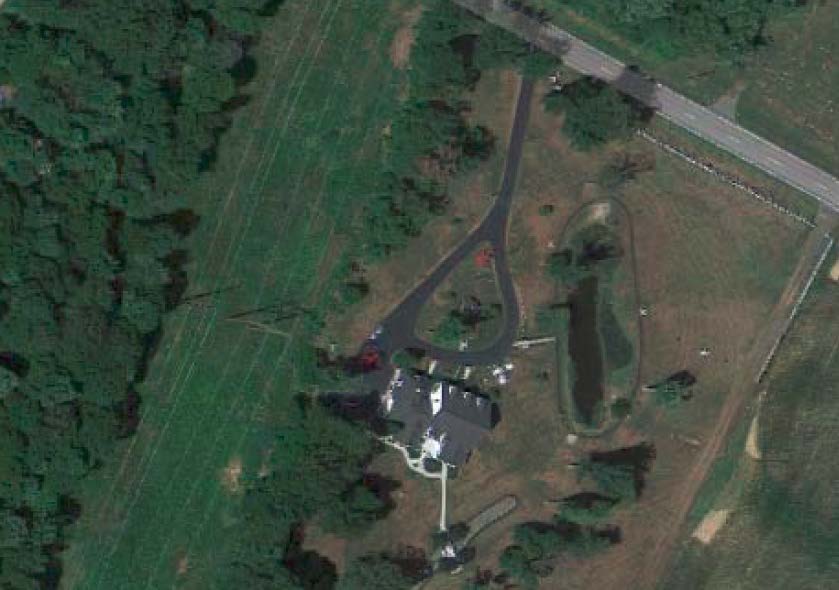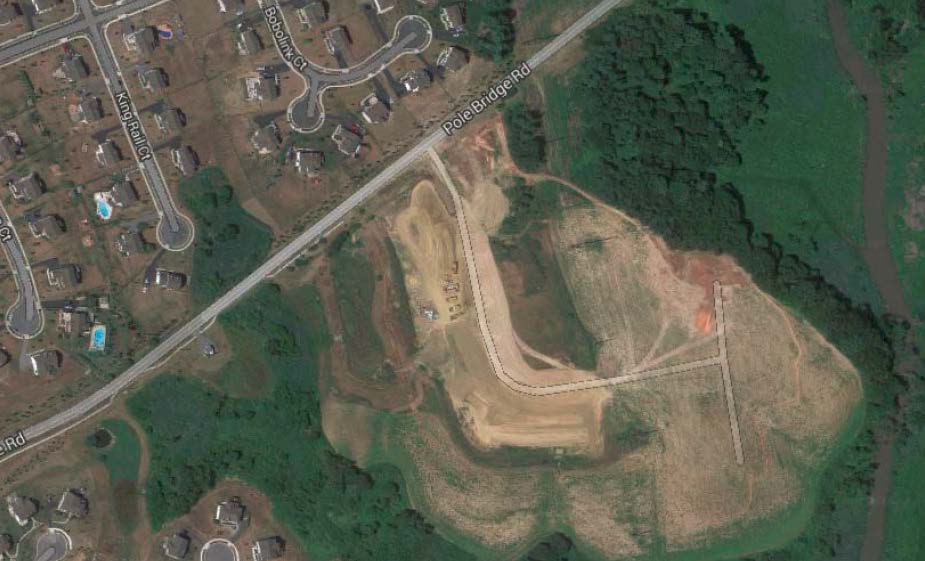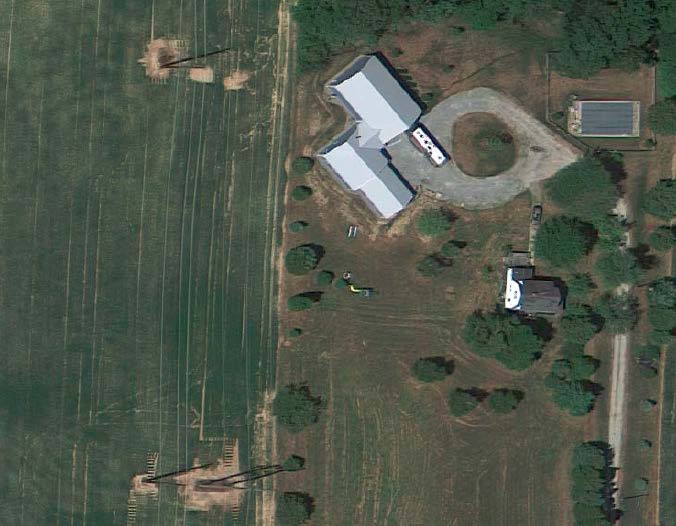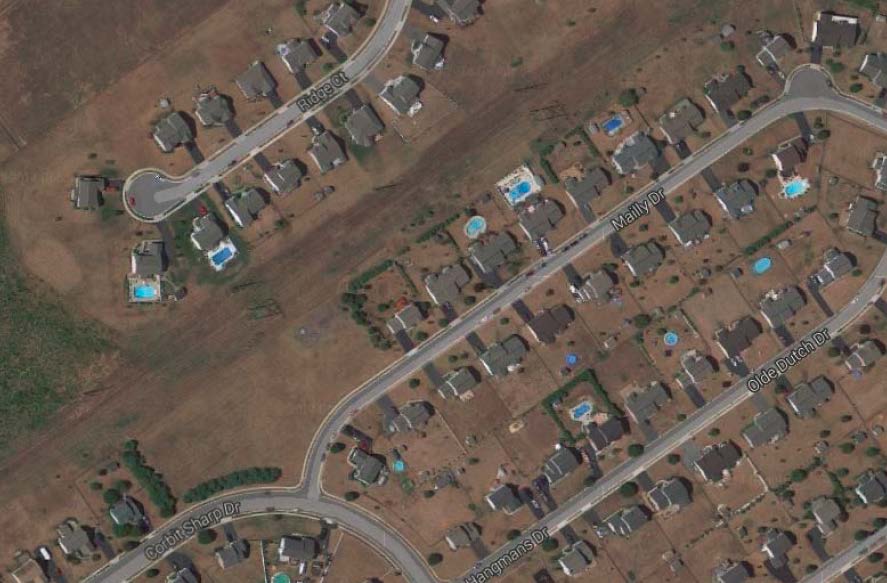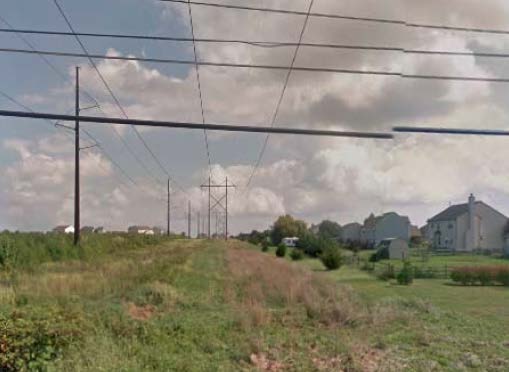Will Delaware, like Illinois, sue FERC and PJM?
July 30th, 2015
Sure hope so — they’ve got it coming. Cost apportionment is a big issue, and for PJM, well, they’d taken their cost apportionment dream to FERC, got the FERC rubber stamp, but it seems they’ve not done a good job of it, according to the Federal Court — that’s old news:
Fast forward to today — turns out Delaware’s Gov. Markell is objecting to costs assessed to Delaware ratepayers, (though I’m not seeing any objection to the project itself coming out of Delaware). DOH! He’d better, this project does nothing for Delaware.
Here’s the PJM Planning doc that tells all:
Note on the first page the statement of need, of why this project is wanted — this is really important:
PJM specified that solution proposals must improve stability margins, reduce Artificial Island MVAR output requirements and address high voltage reliability issues.
So let me get this straight — they’re having stability and reliability issues and PSEG wants to reduce Artificial Island MVAR output requirements, and want to charge Delaware ratepayers for this? PUH-LEEZE… This is a benefit to PSEG, not Delmarva…
And look what our big-coal friends at ODEC have to say:
ODEC letter regarding Artificial Island 7-29-2015
This project taps into the new line that was built not long ago:
Delaware has no regulation of transmission need or siting — so utilities can pretty much do whatever they want. Further, it’s a FERC tariff, so the state doesn’t have anything to say about it going into the rates, and cost apportionment. Great, just great. So now Markell is objecting? It’s a little late…
Delaware needs legislation — legislation like a “Power Plant Siting Act” and a legislative requirement of a need determination for whatever infrastructure they think they want. They need legislation specifying that only Delaware utilities can own and operate transmission in Delaware (see House Bill 387 from the 2014 session). Here’s what House Bill 387 would have done (It would have been an effective good start, protective of Delaware!), establish that a utility wanting to construct and operate transmission demonstrate NEED! Here’s the wording, though it would require quite a bit more, and some solid rules, to be effective:
a.the need for the proposed transmission line;
b.the impact on the reliability of the transmission grid
c.the long term viability of the public utility proposing the line;
d.the technical engineering and operating expertise of the public utility;
e.the technology and design proposed for the new transmission line; and
f.the economic and safety impact of the proposed transmission line.
Here’s the report about this PJM approval from Jeff Montgomery, News Journal:
Disputed cost-shares remain in plan for new power line
Note this snippet:
And here’s the schedule for this project going forward from the PJM Board meeting yesterday:
Seems there’s an opportunity before the FERC ALJ. But before then? What is Delaware going to do? Well, take a look at what Illinois did when it didn’t appreciate the FERC Cost Apportionment scheme — they sued FERC and won, based on the notion that if they weren’t benefitting, they shouldn’t be the ones paying:
The FERC Cost Apportionment scheme was remanded, and it’s in settlement negotiations right now. What is Delaware doing in that docket? To review the public postings, go HERE and search for FERC Docket EL05-121. The next settlement conference is Thursday, August 6, 2015, starting at 10:15 a.m. in a hearing room at FERC HQ. Delaware is represented in this, at least there are Delaware PSC staff listed on the service list, Janis Dillard, John Farber, and Robert Howatt. So what are they doing about this cost apportionment scheme? Seems this settlement conference is just the place for raising a stink about the PJM cost apportionment scheme, to raise issues of “benefits” and “cause cost, pay” arguments. Are they showing up and speaking up for Delaware?
Delmarva Power to rebuild transmission in DE?
January 3rd, 2015
Delaware’s a small state, and it’s just the wrong shape for getting a good transmission map. Click the above one for a larger view, but it’s still hard to see. But check it out! Take a look at that black line, stretching from Red Lion down to Milford. That’s the 230 kV line that Delmarva Power wants to rebuild. If they play this as I think they will (please prove me wrong), they could use this “rebuild” to significantly increase transfer capacity, which given the withdrawal of the Mid-Alantic Power Pathway (MAPP) transmission project, that’s something to watch for.
Public meeting about transmission line rebuild
7 p.m. Wednesday, Jan. 7, 2015
Odessa Fire Company
304 Main St., Odessa, Delaware
Hosted by Delmarva Power
There’s essentially no regulation of transmission in Delaware, a fact that’s hard to believe given the impacts and power associated with transmission. This project is intended to go right down an existing easement, but the original line was built 50 years ago, and there’s been a lot of development in Delaware since then. Look at the map, and there’s a lot of development right next to this transmission line. Do you think these folks know anything about this transmission plan? Do you think anyone along that easement is getting direct notice about this???
At first glance, a couple of things occur to me.
- Rebuild? As always, I want to know the details. they say it will still be at 230 kV. Let’s have the conductor specs, particularly. How big a conductor are they using, ACSR or ACSS or higher capacity? Will they be rebuild as a single or double circuit, and will it be bundled or not? Here’s the photo of the line, photo from Snooze Urinal, and it’s as it looks to me from driving under it numerous times on the way to/fro Port Penn:
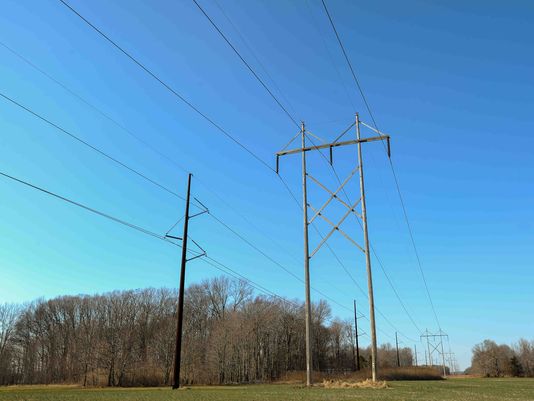 Photo from The News Journal, delawareonline.com
Photo from The News Journal, delawareonline.com
- Use of existing easement or extending beyond? In their press release, there’s something disturbing about how they say they’re going to build this thing:
So looking at this photo above, it’s facing north, the H-frames are on the east side, the monopole on the west, and the News Journal report says:
How is that possible? The H-frames have been there a long time, and rather recently they added the monopole next to it. Now now this will be “built along the eastern border of the existing right-of-way.” EH? Here’s an example, at the intersection of Port Penn Rd. and the line, the “east” is on right on this photo/map (click photo for larger version):
This is what it looks like at the road, looking down the easement with home on the left:
And here’s another example, at the intersection of Pole Bridge Rd. and the transmission lines, also on the way to/fro Port Penn, note the new subdivision roads, Waterbird Lane and Marsh Hawk Court:
Here’s another at 955 Vance Neck Rd (the road is just to the south):
Let’s keep going further south along the easement. Here are homes along Old Corbett Rd. near the intersection of Hwy. 9 — note it’s turned around to fit better, the “easterly” direction they’ll build into is the area towards the homes:
Here’s another subdivision on the other side of Hwy. 9, and the homes along Middessa Drive:
Just a little further south, where the line turns southwesterly, the line is abutted by the homes on Mailly Drive and Corbit Sharp Drive:
Here’s what that easement looks like — build this new thing on the easterly border of the easement? I think not!
And this northern Red Lion to Milford section of the transmission “rebuild” terminates at the Cedar Creek substation, technically in Townsend:
Again, do you think these folks know anything about this transmission plan? Do you think anyone along that easement is getting direct notice about this???
Here’s Delmarva’s Press Release:
Press Release 12/23/2014 – Delmarva Power Project to Benefit Delaware
Here’s the report from the News Journal:
Delmarva to brief public on transmission line rehab
The electrical spine of Delaware is set for a $70 million rehabilitation.
The utility will host a public meeting to brief the community on the project on Wednesday in Odessa.
Contact Staff Writer Xerxes Wilson at (302) 324-2787 or xwilson@delawareonline.com.
For more information:
Delmarva Power will host a public meeting at 7 p.m. Wednesday, Jan. 7, at the Odessa Fire Company, 304 Main St. in Odessa.
Alan Muller featured in Delaware Today
September 19th, 2011
Alan Muller ‘s office in Lake Itasca Park
And at a Rock-Tenn Burner Fest in St. Paul, being introduced by Nancy Hone, Neighbors Against the Burner:

Here’s a profile of Alan that was published in Delaware Today:
Alan Muller takes no prisoners.
His wrath spares few of those in power. Here’s a sampling:
Of the State Chamber of Commerce: “Probably the biggest single foe of the environment in the state.”
His scorched-earth style can elicit bitter backlash. Says John Taylor, senior vice president of the State Chamber of Commerce: “Alan Muller is great at name-calling but lousy on getting his facts right. Mr. Muller attacks anyone who doesn’t agree with him 100 percent. And his narrow, misguided and misanthropic vision is well-known to those in Delaware who truly care for the environment. In fact, the Delaware State Chamber of Commerce has been an active partner in bringing clean energy to Delaware. The latest example of this being the Bloom Energy decision to come to Newark.” While Taylor no doubt expresses what many would like to, other Muller targets chose a more circumspect response. Markell, who gets high marks from many enviros, would say only, “Alan Muller believes strongly in his causes and makes himself heard.” Chris Coons’ office declined to comment. Another Muller target, Debbie Heaton, of the Sierra Club and The Nature Conservancy, says merely that she does not have “happy memories” of working with him.
The official response to Muller is often to ignore or avoid him. That’s understandable, according to John Flaherty, another well-known Delaware activist. “Power hates and marginalizes people who are right, like Alan, because they reveal that the powerful use their positions for themselves and for the interests they serve. And once someone has been banished to the margins, the powerful can rely on the conditioned habits of the public. After all, don’t we all know that anyone on the margins is, by definition, unacceptable?”
According to Muller and some of his supporters, he’s been mistreated and harassed over the years—especially by New Castle County government, which has cited him for many violations at his Port Penn home, a historic building he purchased for about $15,000 (supplemented by a state grant) with the agreement to upgrade it. Muller says the price of the house and its central location between Wilmington and Dover cancels out environmental considerations like the three nearby nuclear reactors, the Delaware City Refinery and other major polluters.
In 2001 Baker had him arrested for “graffiti” and “criminal mischief” after Muller posted warning signs on an open channel carrying raw sewage through a Brandywine Park picnic area. In 2005 he and John Kowalko, then director of the ACORN utility campaign, now a state representative, were ejected from Legislative Hall during a House Energy Committee hearing. When they weren’t allowed to speak, Muller and Kowalko tied gags to their mouths. That incensed then-Rep. Robert Valihura, chairman of the committee, who ordered Capitol Police to remove them.
Calling it “death by a thousand cuts,” Muller says “harassment in the past few years has been relentless.”
Meanwhile, he laments the “plantation mentality” that pervades the state—“the reluctance of people to say anything challenging or critical,” including the media and other environmental organizations. The latter, he says, have been bought off or bullied into submission by those in power. “Other states are less hostile,” he says.
As a result, the somewhat rumpled 61-year-old, nursing “aching feet and a creaky back,” may leave Delaware, perhaps for Minnesota, where his soul mate, Carol Overland, is an energy consultant and lawyer. He spends about half of each year working for environmental groups in several states, at fees exceeding the small income he takes from Green Delaware.
As the most prominent activist in the state’s recent past contemplates taking his leave, it seems an appropriate time to examine his legacy—and his motivation.
For someone so passionate about it, Muller came relatively late to the environmental movement. But the seed was planted early. He grew up in Welshire, a North Wilmington suburb, living with his parents and a brother, who was a year younger. His father, Joseph, was a DuPont manager.
“I’m not saying my father was a bad guy,” Muller says, “but he reflected the values of the chemical industry at the time, and his proudest achievement was bollixing up an EPA effort to regulate sulfuric acid plants. He and other DuPonters went to Washington in the ’60s and testified that (regulation) was unreasonable, impossible and too expensive. As a kid, I thought about it and decided I kind of didn’t agree. I remember thinking the EPA could have gotten the technical details wrong, but it was hard to disagree with the concept of reducing pollution.”
(Of his relationship with his late parents, Muller says: “It had its ups and downs. I’d think my activism was part of it. They would have liked a picket-fence Republican son and grandkids.” Married once, briefly, Muller has no children.)
Fast-forward several years. Muller drops out of UD after his junior year (eventually earning a social sciences degree), goes on to several jobs, then finds himself working as a consultant for, ready? DuPont!
As a technical writer for the company’s engineering department, he says he worked with people who were involved in environmental cleanup and who also lobbied against stricter regulations. “I began to see how it worked from the inside. After several years of pumping out this rhetoric about ‘clean and green’ and don’t regulate us because we do the right things, when Reagan came in, all the company’s pro-environment rhetoric basically stopped, because they felt, ‘Now our guy is in charge.’”
While acknowledging that DuPont paid and treated him well, Muller says, “I began to not like the way they spent so much energy on bullshit and propaganda and suborning the regulatory process rather than just knuckling down and fixing the problems. I didn’t like being involved in that.”
And so an environmental advocate with the passion of a convert was born.
Casting about among the state’s enviro groups, he chose the Sierra Club, where he became conservation chairman. Soon his blunt style and disagreements with some club policies and members got him kicked out—via registered letter.
So, in 1995, he formed Green Delaware, recruiting longtime activists Jake Kreshtool, Ted Keller and Frieda Berryhill. Essentially a virtual organization with an email list of about 3,000 and fueled by Muller’s data-filled, aggressive newsletters, it quickly became the state’s most active—or at least most annoying—environmental group, and he gained a reputation for fact-based arguments that often irked opponents.
The 93-year-old Kreshtool, a labor lawyer and former candidate for governor, admits Muller “isn’t much on social skills,” and can be irritating, “But he’s always polite, and his testimony was determinative in many, many cases involving air pollution.”
Much of Green Delaware’s support comes from an annual $10,000-$15,000 grant from the New Jersey Environmental Federation and Environmental Endowment for New Jersey. The grant recognizes Green Delaware’s work to limit water pollution, particularly in the Delaware River. Jane Nogaki, founding chair of the endowment, says Muller “is at the top of Delaware environmental groups. He can be confrontational without being belligerent, his arguments are well-grounded, and he asks questions rather than making accusations.”
Muller clearly has scored victories—a ban on industrial incinerators probably is his most significant—but most observers agree he could have accomplished much more with a less rigid approach. “Alan rarely declares victory,” says Flaherty. “What I would consider victories in a lot of cases he considers defeats.”
Bill Zak, of Citizens for Clean Power in Sussex County, understands Muller’s attitude. “He knows that conciliation often means things getting dropped in a drawer and forgotten.”
Flaherty and Nancy Willing, author of the liberal “Delaware Way” blog, exemplify another Muller trait: burning bridges.
Flaherty calls Muller “an incredibly bright man who has made environmentalism mainstream in Delaware,” then adds, “Alan has not spoken to me since January of 2006.” According to Muller, “John stabbed me in the back” during his campaign against incinerators.
Willing, also a Muller fan, says he cut her off when he perceived that she sided with the authorities in his dispute over upgrades to his Port Penn home.
Due in part to this penchant for severing ties and his prickly style, Muller has no prospective successor as director of Green Delaware. Kreshtool, Keller and Berryhill are all 80-plus, other allies have died, and younger people haven’t stepped forward.
“In my arrogance,” says Muller, “I thought if we set an example of being smarter, of having more principled behavior than other enviros, it would rub off. Ain’t happening. Maybe it’s my lack of leadership ability.”
If he leaves, Muller and others agree that Green Delaware will probably die, an event that has his foes rubbing their hands in anticipation. For others, like Jane Nogaki, it will be a great loss.
“Today, environmental groups are using social media to spread their message,” she says, “but there’s no substitute for local, grass-roots action. And that’s what Alan always did, standing up against the giants of industry and holding politicians accountable.”
Big write up on John Blair
June 4th, 2010
John Blair is a cohort in the no-coal world, and he’s been featured in a BIG write up recently — from the looks of this article, perception of him is expanding beyond the “Royal Pain In The Ass” mode to merit a feature in the… get this… the BUSINESS magazine in Evansville, Indiana. But make no mistake about it, John Blair IS a Royal Pain In The Ass, in the best possible sense of the word, he revels in it and does it very well. He’s been a fixture in environmental issues long enough that they’re learning it helps to pay attention. He operates his Valley Watch a lot like Alan and Green Delaware, the one person responsible for focusing direction and keeping it all together, and it’s not easy and for sure the work is NEVER done.
The article ends with a classic Blairism:
Blair says, “If I have something to add to the conversation, I’ll add it” — in a loud voice.
Here it is in its entirety, in case the link disappears:
A Watchful Eye
The controversial life of Pulitzer Prize-winning photographer and environmental activist John Blair
Aloft over Henderson County in a small Cessna, John Blair points out the windows in each direction and out to the horizon, identifying the power plants visible from 3,000 feet. He locates nearly a dozen plants, including the Rockport Power Plant with one of the tallest stacks in the world (1,038 feet) and Gibson Station, operated by Duke Energy, 2008’s third largest power plant in the United States for generating capacity, according to Electric Light & Power magazine.
Blair is on assignment to produce aerial photographs of a large construction project of an Evansville-based firm and has hired a pilot from Don Davis Aviation out of Henderson, Ky., to fly him up the Ohio River. The bird’s eye views he creates pay the bills and stoke his passion: the health of the citizens of the Ohio Valley. For around three decades, Blair and the organization he co-founded, Valley Watch, have been the most vocal and active area advocates for clean air and water.
“I, personally, and Valley Watch have had tremendous victories,” Blair says, claiming a record of 33 wins and four losses against projects and endeavors that his organization claims would cause serious harm to the public health of the Ohio Valley.
Read the rest of this entry »
Sussex County ponders Power Pathway
November 3rd, 2009
Sussex County has held off on taking a formal stand on Delmarva Power’s Mid-Atlantic Power Pathway, or MAPP, but Delmarva is pushing, so now’s the time to call them with a simple message:
No, don’t encourage and facilitate coal!
Say NO! to Delmarva Power’s Mid-Atlantic Power Path transmission proposal!
Delmarva Power is going around drumming up support for its Mid-Atlantic Power Pathway, or MAPP. They approached Sussex County to support the line (what do we know about that? Not much. Perhaps a FOIA to see what they’ve been doing is in order?) and because there’s a zoning matter before the County, they held off..
Delaware Electric Coop would like to use the MAPP line to bring in electricity from a new Old Dominion coal plant in Virginia. Oh… great idea… I’ve posted about this before:
Here’s Alan’s Green Delaware Alert and handout for DEC’s last annual meeting:
Building a coal plant is a really bad idea, and building transmission for coal is a really bad idea plus… two wrongs do not make a right.
Call all the County Council, thank them for putting on the brakes, and let them know what you think about Delmarva Power’s transmission for coal:
Michael H. Vincent (302) 629-2396
Samuel R. Wilson (302) 856-2972
Joan R. Deaver (302) 645-6657
George B. Cole (302) 539-1611
Vance C. Phillips (302) 542-1501
Here’s a report from the Cape Gazette:
Sussex County council delays support of transmission line
Pathway could pump $260 million in county’s economy
Moore responded with an emphatic yes.
He said anticipated savings are about 60 cents per month in charges related to congestion.


